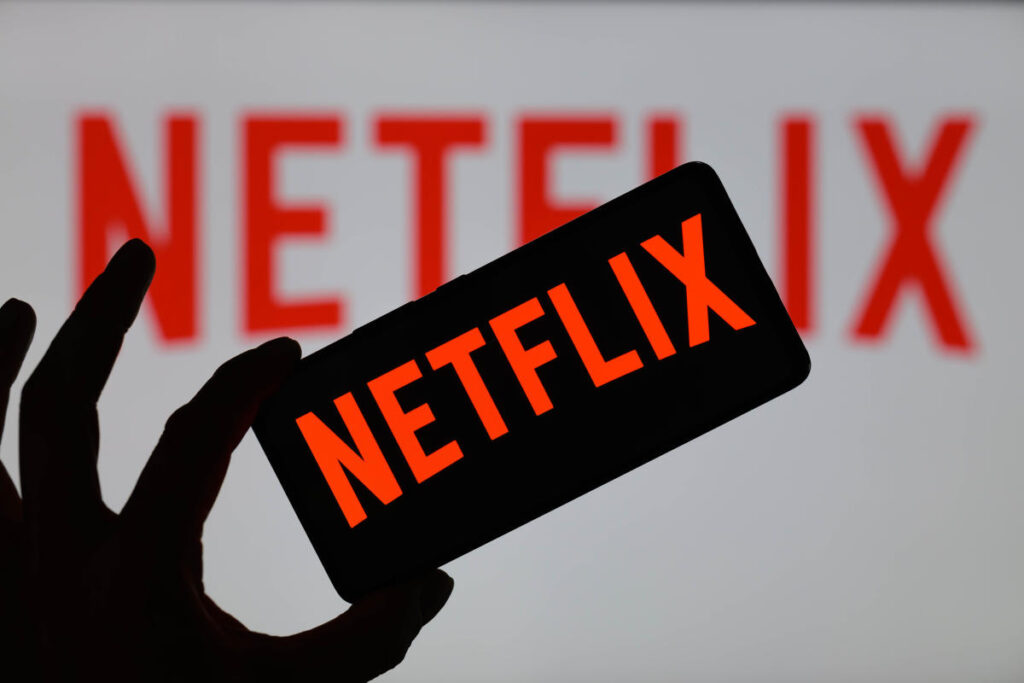Netflix stock (NFLX) is up a resounding 50% since the start of the year, with its shares currently trading near the high end of their 52-week range.
But don’t break out the bubbly just yet: The company’s next big challenge is maintaining high — and consistent — viewership levels.
Netflix recently released the latest edition of its biannual viewership report, where the streaming giant revealed subscribers watched over 94 billion hours on the platform from January to June.
Perhaps even more notably, it was the first report that allowed investors to digest the year-over-year trends in Netflix’s global engagement. This comes after the streamer added more than 39 million subscribers over the 12-month period ending in June.
The majority of those subscriber gains stemmed from the continued rollout of Netflix’s password-sharing crackdown, along with the introduction of its cheaper ad-supported tier. But the company itself has said engagement, or the amount of viewing hours spent on the Netflix platform, is a more important metric than the actual number of subscribers, especially as more competitors enter the space.
The problem? When analyzing the aggregate reports, year-over-year engagement on the platform was pretty much flat. It’s unclear exactly why. But if this trend continues, it could have lasting consequences on the streamer’s future.
“This lack of growth may be worrying for Netflix for a number of reasons,” MoffettNathanson analyst Robert Fishman wrote in a look at the data last week. “For starters, if the lack of engagement growth is due to lack of real user growth, it implies that the subscriber growth we have seen has been simply improved monetization of an existing base — in other words, a de facto price increase.”
According to the numbers, total platform engagement inched up to 94 billion hours from January to June, representing a mere 1% increase from the 93.5 billion hours viewed during that same time period last year. This comes despite that 39 million-plus surge in subscribers over the past year.
Meanwhile, average daily hours viewed per subscriber decreased on the platform, falling 13% year over year to 1.9 hours so far in 2024, down from the prior 2.1 hours in the year-ago period.
For its part, Netflix isn’t so concerned. A company spokesperson told Yahoo Finance that engagement is healthy, even with recent headwinds from its crackdown on password sharers. The company also referenced its continued dominance in overall TV viewing, as shown by the Nielsen Gauge report.
Still, that lack of significant growth, according to Fishman, could imply insufficient pricing power, which is the company’s ability to raise streaming prices without reducing demand. Analysts have surmised Netflix may be preparing another round of price hikes later this year.
A pricing ceiling?
Pricing power has become especially important for streaming companies as consumers become more picky. On average, US consumers subscribe to four streaming services and spend about $61 per month, according to the latest Digital Media Trends report from Deloitte. That means fewer opportunities to retain loyal subscribers over time.
On top of that, subscriber churn — or the act of paying users canceling their streaming plans — was elevated in August compared to the year-ago period, according to the latest data from consumer measurement platform Antenna.
Across all streaming platforms, churn levels in August stood at 5.2%, higher than the 4.7% in the same month last year as more platforms implemented password-sharing crackdowns and upped their respective prices. Netflix saw churn rise to 2%, up from 1.8% in August 2023 but down from the 2.8% churn rate in July after the company phased out its basic tier.
The good news? Netflix still has the lowest churn rate across all of the major streaming players. But “there’s probably more of a pricing ceiling ahead than what we had 12 or 18 months ago,” CFRA analyst Ken Leon told Yahoo Finance.
Netflix’s “Basic” plan had been offered to US consumers for $11.99 a month. The removal of the plan comes as Netflix has touted the success of its less-than-two-years-old ad-supported offering, which comes at a cost of $6.99 per month. For ad-free experiences, Netflix offers plans that start at $15.49 per month.
But if engagement levels cannot be sustained, that lack of growth could spill over into its fledgling advertising business and crimp overall revenue.
“Engagement levels have a direct impact on revenues generated by Netflix’s growing ad tier,” Fishman said. “Stalled engagement growth now may mean stalled ad inventory growth (per subscriber) as well.”
Delivering strong top-line growth has become a priority for the company, especially as expectations remain elevated. Wall Street analysts expect Netflix to deliver nearly 15% revenue growth when it reports third quarter earnings on Oct. 17. Earnings are expected to surge by about 40% year over year, according to the latest estimates from Bloomberg.
For the full year, Netflix’s earnings are projected to rise about 60% year over year to $19.08 per share, while full-year revenue of $38.73 billion would mark an increase of about 15% on a yearly basis.
“The valuation of the stock speaks to a growth stock,” CFRA’s Leon told Yahoo Finance. “So if all of a sudden you’re delivering 8% to 10% growth and not 15%, that’s a problem and the stock will go down.”
“It’s the law of large numbers,” he added. “The ability for Netflix to just put up really strong revenue numbers really matters.”
Alexandra is a Senior Reporter at Yahoo Finance. Follow her on X @alliecanal8193 and email her at alexandra.canal@yahoofinance.com
Click here for the latest stock market news and in-depth analysis, including events that move stocks
Read the latest financial and business news from Yahoo Finance
Read the full article here

